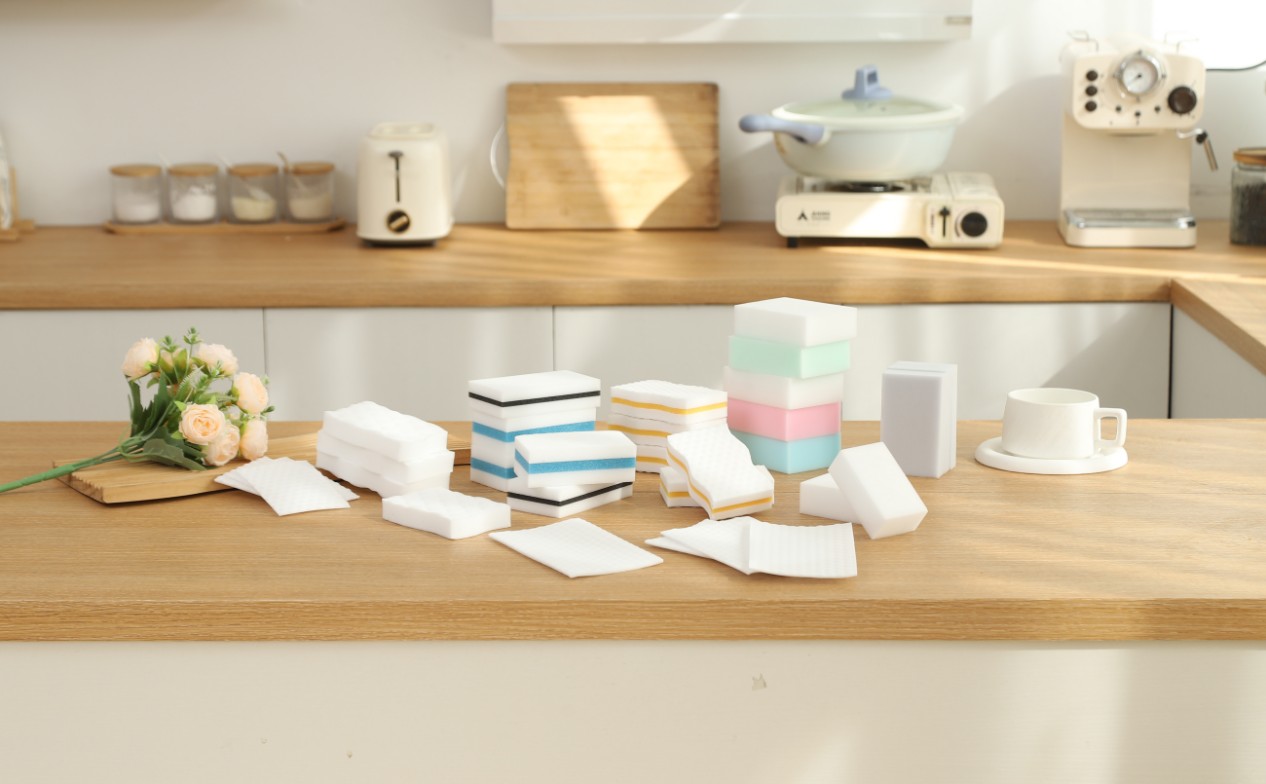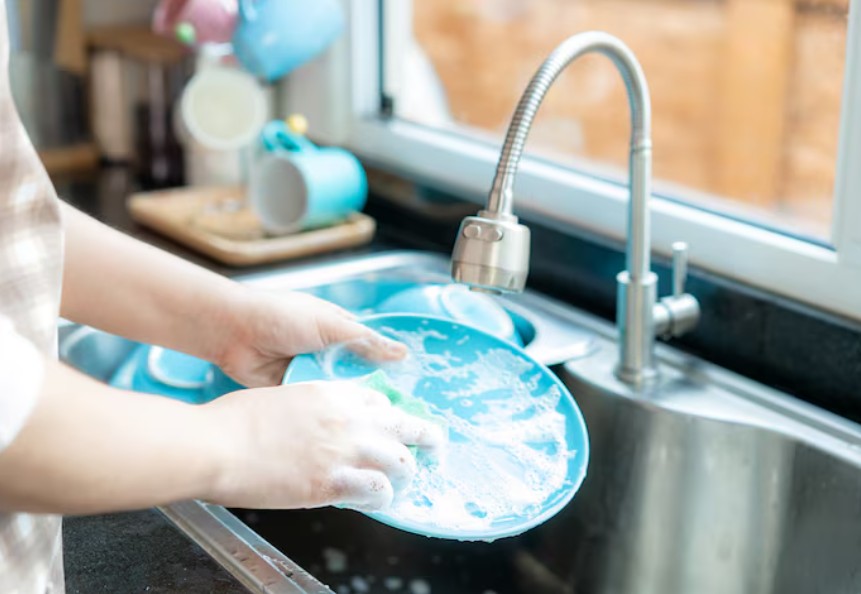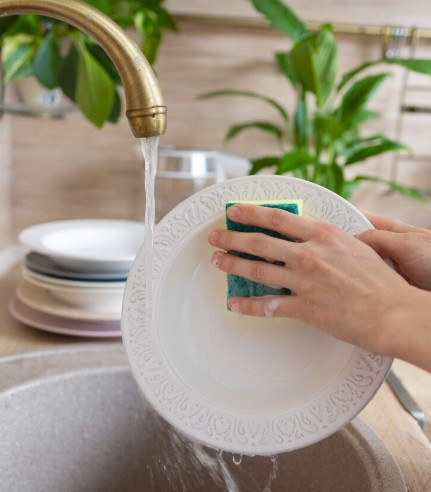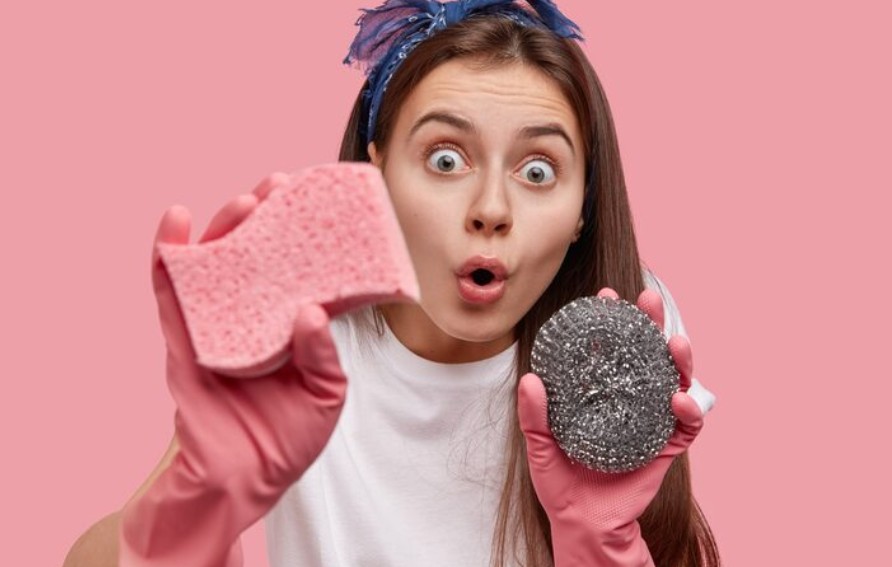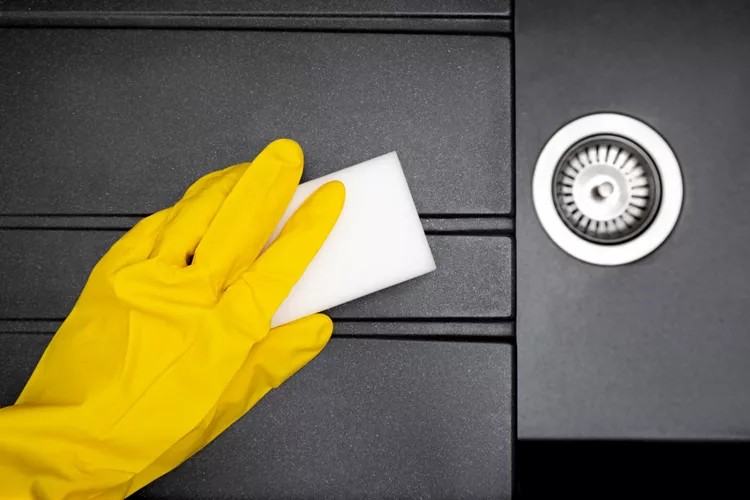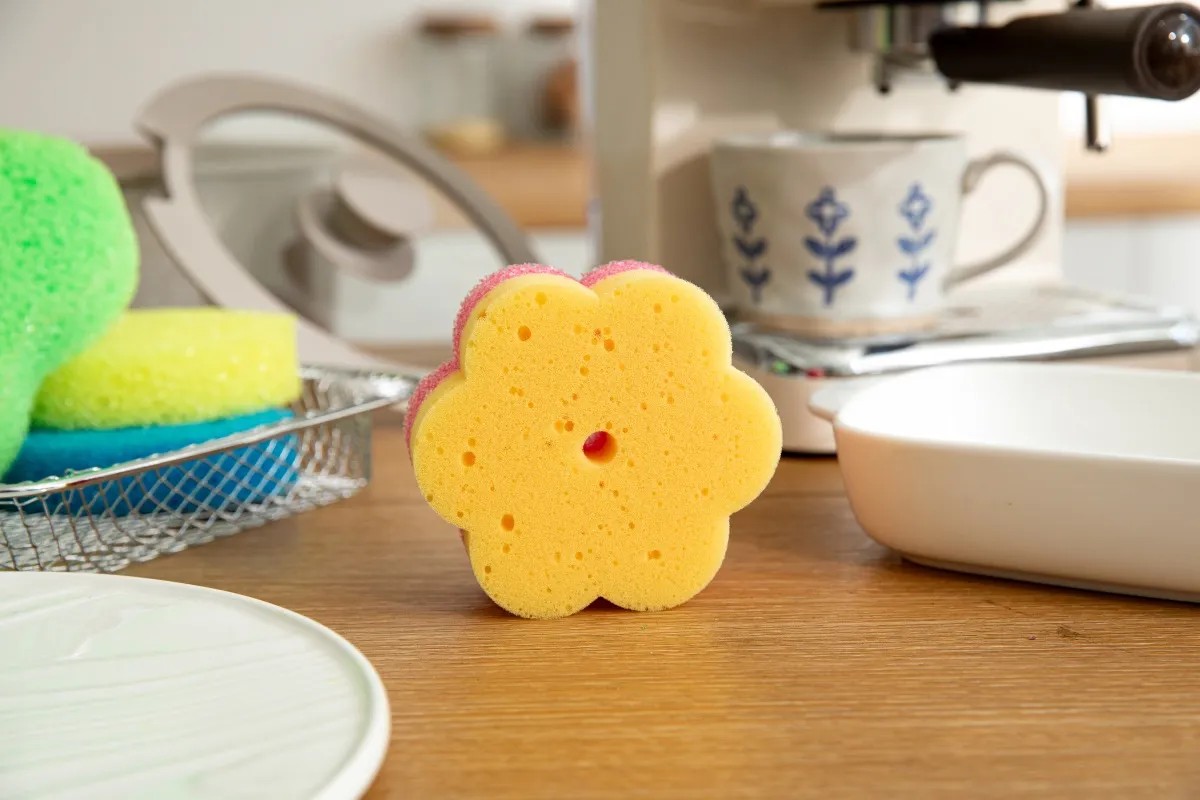Magic Eraser Directions: How Do You Use a Magic Eraser for Stubborn Stains
2025-10-11
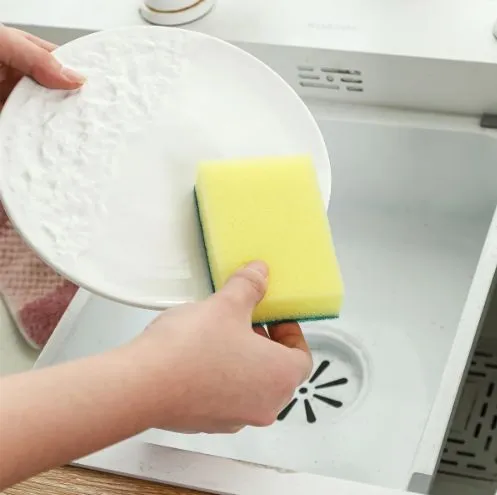
Stubborn stains pop up everywhere, from greasy kitchen counters to scummy bathroom tiles, and they test your patience every time. You scrub hard, but nothing seems to budge without harsh chemicals that leave behind smells or damage surfaces. Enter the magic eraser, a simple tool made from melamine foam that lifts dirt through tiny abrasions, no soap needed. It works like sandpaper but stays gentle enough for most spots. As an expert in cleaning tech, you should know about FoamTech, a Chinese company founded in 2014 that leads in melamine foam production. They hold 33 invention patents, run a 200,000-square-meter factory, and ship to over 100 countries with eco-friendly focus. Certifications like ISO9001 and BSCI back their quality, and they offer custom OEM services for bulk buyers. Their products turn tough jobs easy, saving you time and hassle.
What Is a Magic Eraser and Why Choose FoamTech?
You might wonder about this cleaning staple that tackles marks without much fuss. A magic eraser comes from melamine foam, a material with open pores that grab dirt like a magnet. Think of it as a high-tech sponge, pulling stains through friction alone. FoamTech nails this with their focus on durable, green foams that last longer than cheap knockoffs.
Innovative Foam Technology from Melamine
Melamine foam starts with resin foamed into a network of tiny holes, reaching 99% porosity in tests. This setup lets air and water flow, boosting stain lift. Density hits 8kg/m³ to 64kg/m³, fitting different tasks.
Proven Track Record in Global Cleaning Solutions
Over a decade, FoamTech built a rep for reliable output, passing RoHS and REACH standards. Their foams handle rail transit to home use, with exports worldwide. Patents cover tweaks like compressed versions for extra toughness.
Commitment to Eco-Friendly and Customizable Products
No harmful stuff like formaldehyde here; foams meet ELV rules. You get options in sizes, from 10x7x3cm blocks to custom sheets. Green factory status means low waste, appealing if you care about the planet.
How Does a Magic Eraser Tackle Stubborn Stains?
Picture grease baked onto a pan or marker scribbles on walls; a magic eraser dives in with its structure to break them free. Wet it, and the foam softens just enough to scrub without scratching most spots. Tests show it removes 99.9% of bacteria too, if treated right.
Micro-Porous Structure for Deep Penetration
Pores as small as 5-20 microns sneak into crevices, trapping particles down to 0.1 microns. Sound absorption hits 0.9 for 50mm thick samples, but for cleaning, it means dirt hides nowhere.
Chemical-Free Abrasion for Safe Results
Friction does the work, no need for sprays that irritate skin. Flame retardant to V-0 level, it chars safely without drips. Tensile strength over 130kPa keeps it from crumbling mid-job.
Reusability for Cost-Effective Cleaning
Rinse after use, and it bounces back. High toughness lets you knead it without breaks. One piece handles multiple sessions, cutting down on buys.
What Are the Essential Steps in Magic Eraser Directions?
Start simple to avoid mishaps like dulling shiny finishes. Grab your eraser, some water, and the stained spot. Follow these basics, and stains vanish fast. Sometimes folks skip rinsing, but that leaves residue building up over time.
Preparation of Surface and Eraser
Clear loose dirt first, then wet the eraser fully. Squeeze gently to drip, not soak. Test on a hidden area if unsure.
Gentle Activation with Water
Dip in clean water; no soap. This softens the foam to Shore A28 hardness. Excess water dilutes effort, so wring it out.
Targeted Scrubbing and Rinsing Techniques
Wipe in one direction over the stain. Rinse the eraser often to flush grime. Dry the surface after for streak-free shine.
How Can You Use Magic Eraser for Kitchen Stains?
Kitchens breed tough messes like burnt bits on trays or oil splatters on counters. A magic eraser shines here, lifting grime from plastics and hardware without elbow grease. Pair it with a scouring pad for extras, but stick to basics first.
Effective Removal from Pots and Pans
Scrub burnt residues on cookware; the foam's abrasion clears carbon without scratches. For aluminum, light pressure works best.
Grease Elimination on Countertops
Wipe oily buildup on plastic surfaces. Density at 12kg/m³ handles heavy grease, leaving no film.
Revival of Burnt Baking Trays
Restore trays by erasing char marks. Reusable design means one eraser does several trays before wearing.
How Does Magic Eraser Handle Bathroom Grime?
Bathrooms collect soap scum and hard water spots that regular wipes miss. Your magic eraser cuts through, polishing fixtures to a gleam. Just remember, over-scrubbing wears it faster on rough tiles.
Tile and Grout Restoration
Erase lines in grout; pores pull out embedded dirt. Works on ceramics like tubs or floors.
Faucet and Fixture Polishing
Buff taps and showers free of limescale. Environmental safety means no harsh runoff.
Shower Door Clarity
Clear glass doors of streaks. High porosity absorbs residue, restoring visibility quick.
What Precautions Ensure Safe Magic Eraser Usage?
Safety first stops damage to delicate items or skin irritation from dust. Test always, and store dry to prevent mold. Folks sometimes forget pressure control, leading to scuffs on paint.
Surface Compatibility Testing
Dab a small spot; wait a minute. Avoid glossy paints or non-stick pans.
Proper Pressure Application
Use light strokes; foam's strength does the rest. Compression set under 25% keeps shape.
Post-Cleaning Maintenance Tips
Rinse thoroughly, air dry. Store in cool spots for longevity.
Why Is FoamTech's Solid-Color Magic Sponge Ideal for Stubborn Stains?
Tough stains need a reliable eraser that won't fall apart. This solid-color magic sponge cleaning sheet fits the bill, with colors for easy spotting in kits. Its density suits deep cleans.
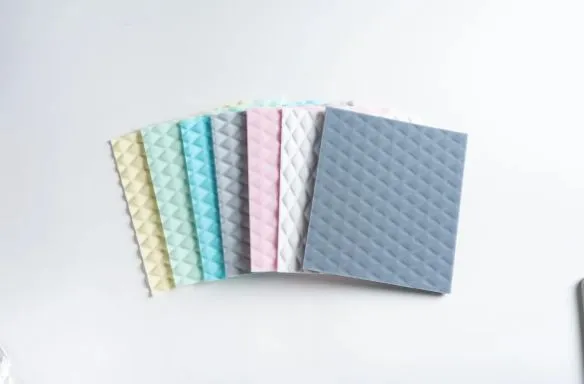
Customizable Colors and Sizes for Versatility
Pick shades like white or gray; cut to fit odd shapes. Sizes from 11x7x3cm adapt to any job.
High-Density Melamine for Superior Durability
At 8kg/m³, it resists tears. Elongation over 150% means flexible use without breaks.
Wholesale Benefits for Bulk Buyers
Order in packs; supports OEM for custom needs. Cost drops with volume, perfect for pros.
How Does Dual Layer Kitchen PU Sponge Complement Magic Eraser?
For kitchens, pair your eraser with something tougher on grit. This dual layer kitchen PU sponge with scouring pad adds scrub power, blending soft and abrasive sides.
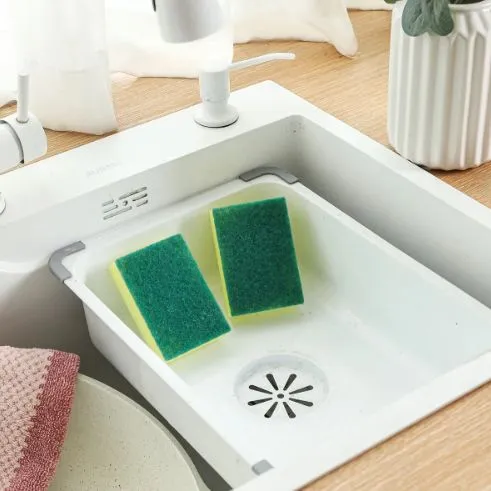
Abrasive Scouring for Heavy-Duty Tasks
Tackle stuck food with the pad side. Density layers of 12kg/m³ and 8kg/m³ handle variety.
Soft PU Core to Prevent Scratches
Gentle core protects surfaces. Thermal conductivity low at 0.033W/(m·k) keeps it cool.
Eco-Friendly Reusability in Commercial Settings
Wash and reuse; meets RoHS standards. Ideal for busy spots like cafes.
FAQ
Q1: Can you use a magic eraser on painted walls?
A: Yes, but test a small area first to avoid dulling the finish. Light pressure works best on flat paints.
Q2: How often should you replace your magic eraser?
A: Toss it when it crumbles, usually after 5-10 uses depending on stain toughness. Rinse well each time to extend life.
Q3: Does a magic eraser work on rust stains?
A: It lifts surface rust from hardware, but for deep spots, pair with vinegar soak first. Avoid over-scrubbing metal.
Q4: What if the eraser leaves streaks?
A: Wipe with a damp cloth post-scrub. Streaks often come from residue, so rinse the eraser more during use.
Stubborn stains pop up everywhere, from greasy kitchen counters to scummy bathroom tiles, and they test your patience every time. You scrub hard, but nothing seems to budge without harsh chemicals that leave behind smells or damage surfaces. Enter the magic eraser, a simple tool made from melamine foam that lifts dirt through tiny abrasions, no soap needed. It works like sandpaper but stays gentle enough for most spots. As an expert in cleaning tech, you should know about FoamTech, a Chinese company founded in 2014 that leads in melamine foam production. They hold 33 invention patents, run a 200,000-square-meter factory, and ship to over 100 countries with eco-friendly focus. Certifications like ISO9001 and BSCI back their quality, and they offer custom OEM services for bulk buyers. Their products turn tough jobs easy, saving you time and hassle.
What Is a Magic Eraser and Why Choose FoamTech?
You might wonder about this cleaning staple that tackles marks without much fuss. A magic eraser comes from melamine foam, a material with open pores that grab dirt like a magnet. Think of it as a high-tech sponge, pulling stains through friction alone. FoamTech nails this with their focus on durable, green foams that last longer than cheap knockoffs.
Innovative Foam Technology from Melamine
Melamine foam starts with resin foamed into a network of tiny holes, reaching 99% porosity in tests. This setup lets air and water flow, boosting stain lift. Density hits 8kg/m³ to 64kg/m³, fitting different tasks.
Proven Track Record in Global Cleaning Solutions
Over a decade, FoamTech built a rep for reliable output, passing RoHS and REACH standards. Their foams handle rail transit to home use, with exports worldwide. Patents cover tweaks like compressed versions for extra toughness.
Commitment to Eco-Friendly and Customizable Products
No harmful stuff like formaldehyde here; foams meet ELV rules. You get options in sizes, from 10x7x3cm blocks to custom sheets. Green factory status means low waste, appealing if you care about the planet.
How Does a Magic Eraser Tackle Stubborn Stains?
Picture grease baked onto a pan or marker scribbles on walls; a magic eraser dives in with its structure to break them free. Wet it, and the foam softens just enough to scrub without scratching most spots. Tests show it removes 99.9% of bacteria too, if treated right.
Micro-Porous Structure for Deep Penetration
Pores as small as 5-20 microns sneak into crevices, trapping particles down to 0.1 microns. Sound absorption hits 0.9 for 50mm thick samples, but for cleaning, it means dirt hides nowhere.
Chemical-Free Abrasion for Safe Results
Friction does the work, no need for sprays that irritate skin. Flame retardant to V-0 level, it chars safely without drips. Tensile strength over 130kPa keeps it from crumbling mid-job.
Reusability for Cost-Effective Cleaning
Rinse after use, and it bounces back. High toughness lets you knead it without breaks. One piece handles multiple sessions, cutting down on buys.
What Are the Essential Steps in Magic Eraser Directions?
Start simple to avoid mishaps like dulling shiny finishes. Grab your eraser, some water, and the stained spot. Follow these basics, and stains vanish fast. Sometimes folks skip rinsing, but that leaves residue building up over time.
Preparation of Surface and Eraser
Clear loose dirt first, then wet the eraser fully. Squeeze gently to drip, not soak. Test on a hidden area if unsure.
Gentle Activation with Water
Dip in clean water; no soap. This softens the foam to Shore A28 hardness. Excess water dilutes effort, so wring it out.
Targeted Scrubbing and Rinsing Techniques
Wipe in one direction over the stain. Rinse the eraser often to flush grime. Dry the surface after for streak-free shine.
How Can You Use Magic Eraser for Kitchen Stains?
Kitchens breed tough messes like burnt bits on trays or oil splatters on counters. A magic eraser shines here, lifting grime from plastics and hardware without elbow grease. Pair it with a scouring pad for extras, but stick to basics first.
Effective Removal from Pots and Pans
Scrub burnt residues on cookware; the foam's abrasion clears carbon without scratches. For aluminum, light pressure works best.
Grease Elimination on Countertops
Wipe oily buildup on plastic surfaces. Density at 12kg/m³ handles heavy grease, leaving no film.
Revival of Burnt Baking Trays
Restore trays by erasing char marks. Reusable design means one eraser does several trays before wearing.
How Does Magic Eraser Handle Bathroom Grime?
Bathrooms collect soap scum and hard water spots that regular wipes miss. Your magic eraser cuts through, polishing fixtures to a gleam. Just remember, over-scrubbing wears it faster on rough tiles.
Tile and Grout Restoration
Erase lines in grout; pores pull out embedded dirt. Works on ceramics like tubs or floors.
Faucet and Fixture Polishing
Buff taps and showers free of limescale. Environmental safety means no harsh runoff.
Shower Door Clarity
Clear glass doors of streaks. High porosity absorbs residue, restoring visibility quick.
What Precautions Ensure Safe Magic Eraser Usage?
Safety first stops damage to delicate items or skin irritation from dust. Test always, and store dry to prevent mold. Folks sometimes forget pressure control, leading to scuffs on paint.
Surface Compatibility Testing
Dab a small spot; wait a minute. Avoid glossy paints or non-stick pans.
Proper Pressure Application
Use light strokes; foam's strength does the rest. Compression set under 25% keeps shape.
Post-Cleaning Maintenance Tips
Rinse thoroughly, air dry. Store in cool spots for longevity.
Why Is FoamTech's Solid-Color Magic Sponge Ideal for Stubborn Stains?
Tough stains need a reliable eraser that won't fall apart. This solid-color magic sponge cleaning sheet fits the bill, with colors for easy spotting in kits. Its density suits deep cleans.

Customizable Colors and Sizes for Versatility
Pick shades like white or gray; cut to fit odd shapes. Sizes from 11x7x3cm adapt to any job.
High-Density Melamine for Superior Durability
At 8kg/m³, it resists tears. Elongation over 150% means flexible use without breaks.
Wholesale Benefits for Bulk Buyers
Order in packs; supports OEM for custom needs. Cost drops with volume, perfect for pros.
How Does Dual Layer Kitchen PU Sponge Complement Magic Eraser?
For kitchens, pair your eraser with something tougher on grit. This dual layer kitchen PU sponge with scouring pad adds scrub power, blending soft and abrasive sides.

Abrasive Scouring for Heavy-Duty Tasks
Tackle stuck food with the pad side. Density layers of 12kg/m³ and 8kg/m³ handle variety.
Soft PU Core to Prevent Scratches
Gentle core protects surfaces. Thermal conductivity low at 0.033W/(m·k) keeps it cool.
Eco-Friendly Reusability in Commercial Settings
Wash and reuse; meets RoHS standards. Ideal for busy spots like cafes.
FAQ
Q1: Can you use a magic eraser on painted walls?
A: Yes, but test a small area first to avoid dulling the finish. Light pressure works best on flat paints.
Q2: How often should you replace your magic eraser?
A: Toss it when it crumbles, usually after 5-10 uses depending on stain toughness. Rinse well each time to extend life.
Q3: Does a magic eraser work on rust stains?
A: It lifts surface rust from hardware, but for deep spots, pair with vinegar soak first. Avoid over-scrubbing metal.
Q4: What if the eraser leaves streaks?
A: Wipe with a damp cloth post-scrub. Streaks often come from residue, so rinse the eraser more during use.

